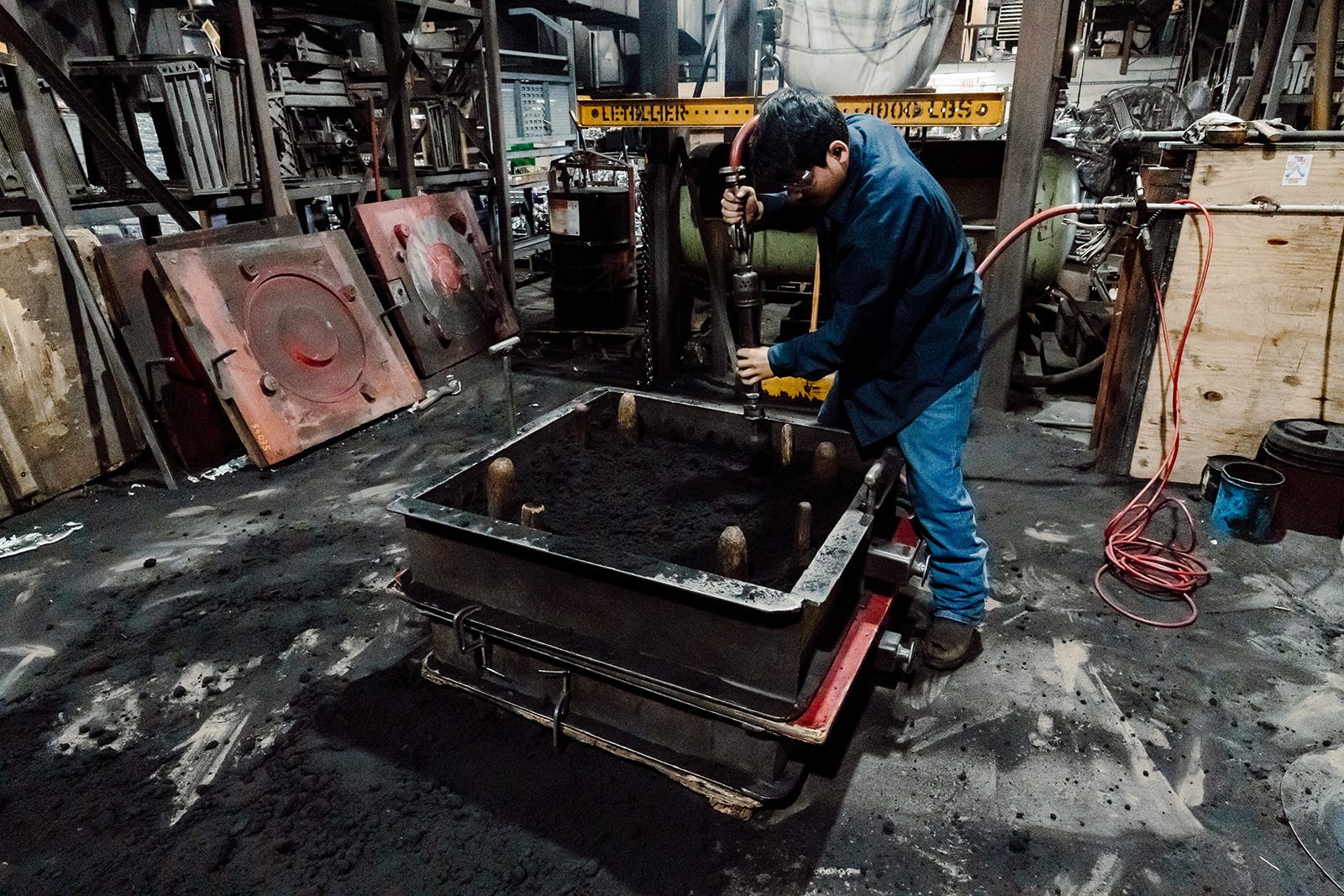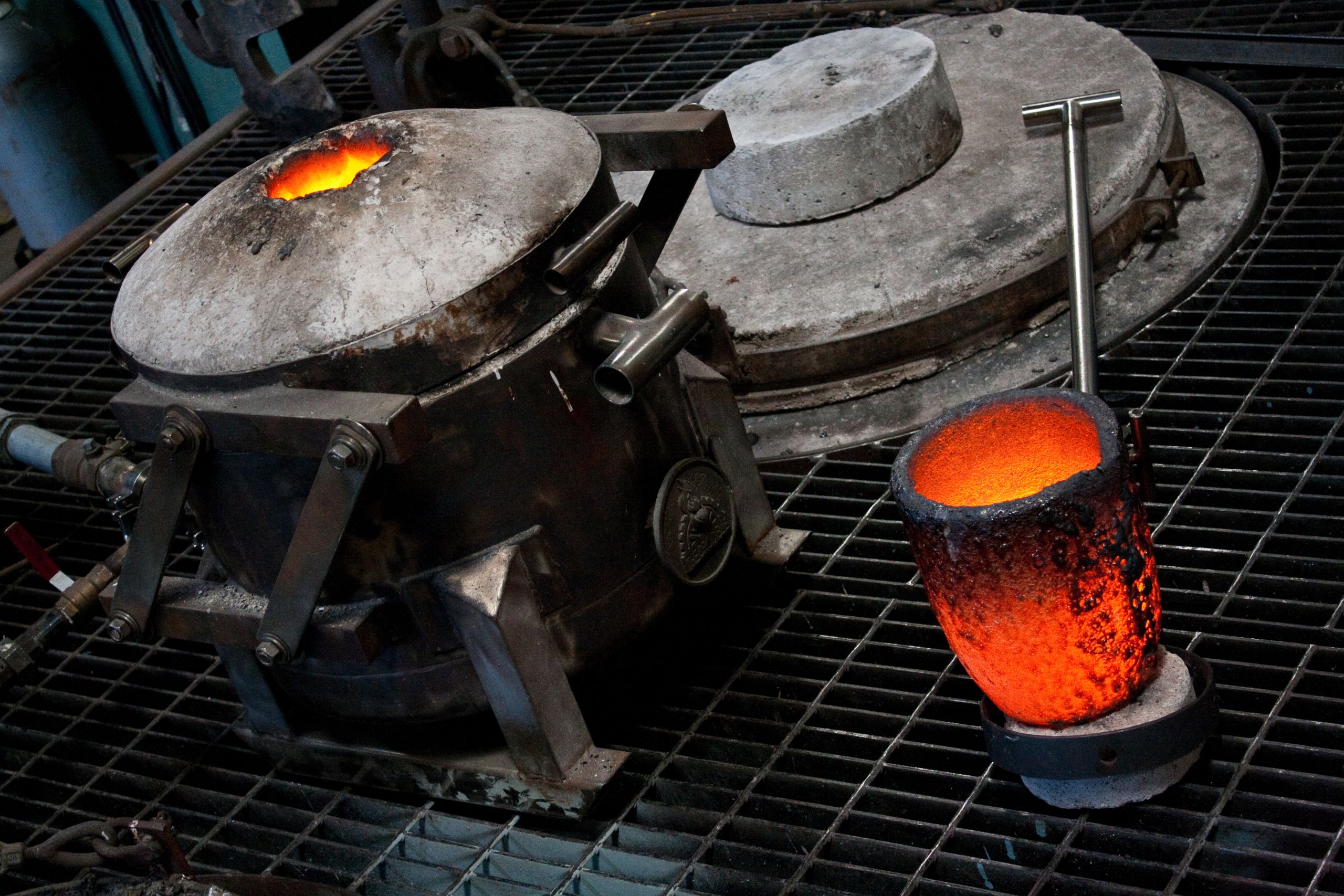How to Begin a Profession in the Casting Foundry Sector
Checking Out the Essential Duty of Casting Foundry in Modern Production
Casting factories are critical in modern-day production, offering essential components across varied industries. Casting Foundry. Their ability to generate elaborate, lightweight parts meets the expanding needs for efficiency and high quality. The landscape is developing, influenced by technological improvements and sustainability concerns. As these shops browse chances and obstacles, their future duty in production continues to be unclear. What methods will they use to adapt and prosper in this vibrant atmosphere?
The Principles of Casting: Understanding the Refine
Casting has been an essential manufacturing process for centuries, its concepts continue to be vital to modern-day market. This procedure involves putting a fluid material, typically metal, right into a mold to develop a details form. The mold and mildew is developed to form the desired final product, which solidifies as it cools. Key phases in casting consist of pattern production, mold and mildew production, pouring, and completing. Each phase calls for mindful focus to information, guaranteeing that the last item fulfills top quality and dimensional criteria.
The adaptability of Casting enables the production of complicated geometries that would be impossible or tough to achieve with other producing methods. In addition, Casting can accommodate a range of materials, consisting of metals and polymers. This adaptability makes it a necessary method for industries ranging from automotive to aerospace, sustaining development and effectiveness in the development of components that satisfy the demands of contemporary applications.
Kinds Of Casting Techniques and Their Applications
Casting techniques vary, each tailored for details applications and material needs. Sand Casting is one of the oldest methods, appropriate for complex geometries and big components, using sand molds. Investment spreading, recognized for its accuracy, is perfect for elaborate designs and is typically made use of in aerospace and clinical sectors. Pass away spreading, frequently employed for high-volume manufacturing, allows for rapid production of smaller components with great surface area coating, usually in aluminum or zinc alloys. Shell Casting offers a balance between both, giving great details and good stamina, making it popular in auto applications. Long-term mold spreading, used for non-ferrous metals, delivers a tighter dimensional resistance and far better mechanical residential properties. Finally, centrifugal Casting works for creating round elements, frequently located in pipelines and tubes - Casting Foundry. Each method offers unique purposes, underscoring the versatility and relevance of Casting in modern-day manufacturing
The Impact of Casting Shops on Market Innovation
As markets venture for higher effectiveness and product quality, the duty of casting factories ends up being increasingly critical in driving technology. These facilities act as the backbone for creating complex components throughout different sectors, consisting of auto, aerospace, and power. By leveraging innovative Casting strategies and materials, foundries add to the growth of lighter, more powerful, and much more long lasting products that satisfy developing consumer demands.

In addition, foundries assist in the use of sustainable practices, such as recycling steel and minimizing waste, which aligns with contemporary sector criteria for environmental duty. Ultimately, the ingenious capabilities of casting foundries not just boost making efficiency yet additionally propel whole sectors into a future defined by technological improvement and sustainability.

Challenges Encountering Casting Shops in a Modern Economy
While innovation continues to improve the manufacturing landscape, casting foundries deal with a myriad of challenges that threaten their operational stability. One significant concern is the boosting competition from advanced manufacturing innovations, such as additive production, which can generate complicated parts with less material waste. In addition, the varying prices of raw materials, specifically steels, present economic dangers, influencing cost predictability. Labor shortages better aggravate these difficulties, as skilled workers come to be harder to discover and preserve amid an aging labor force. Moreover, regulatory stress pertaining to discharges and workplace safety need foundries to purchase expensive upgrades, usually straining restricted sources. The need for electronic transformation additionally impends large, as several foundries struggle to adopt Market 4.0 technologies that improve effectiveness and data monitoring. Collectively, these obstacles urge casting factories to adjust promptly or run the risk of obsolescence in a progressively open over at this website market.
Sustainability Practices in Casting Foundries
In the middle of the difficulties confronting Casting foundries, the fostering of sustainability methods has actually become a necessary method for enhancing functional resilience and competition. Shops are increasingly concentrating on minimizing waste via effective source management, reusing scrap metal, and utilizing eco-friendly materials in their processes. The application of energy-efficient innovations is one more critical element, as it helps lower power usage and carbon exhausts.
Lots of factories are embracing closed-loop systems to minimize water use and minimize the environmental impact of operations. Employee training in lasting practices promotes a society of environmental obligation, making certain that all employee are taken part in sustainability efforts.
Integrating Innovation in Casting Processes
Integrating advanced technologies right into casting procedures has actually ended up being a crucial consider driving efficiency and development within shops. Automation and robotics are increasingly used to improve manufacturing, minimizing labor prices and minimizing human error. Advanced software program for simulation and modeling enables designers to predict results and optimize layouts before physical production starts. In addition, the incorporation of 3D printing technology significantly improves the prototyping stage, facilitating rapid development and reducing preparations.
On top of that, real-time surveillance systems using IoT tools make it possible for shops to track performance metrics and determine potential issues early in the Casting procedure. This data-driven technique not only enhances quality assurance however likewise sustains maintenance strategies that prevent pricey downtimes. Because of this, incorporating these innovations promotes a more dexterous production environment, permitting shops to respond promptly to market needs while keeping high standards of quality and sustainability.
The Future of Casting Foundries in Production

Furthermore, the demand for light-weight and high-performance products in sectors like aerospace and auto will certainly drive innovation within shops. Collaborations in between producers and foundries will likely boost, promoting a much more integrated supply chain that stresses fast prototyping and customization. As electronic change continues, foundries may likewise utilize data analytics to optimize operations and anticipate maintenance requirements, guaranteeing competitiveness. Inevitably, the future of casting shops depends upon their capacity to adjust to technical innovations and market needs while keeping high quality and cost-effectiveness.
Frequently Asked Inquiries
What Products Are Frequently Utilized in Casting Foundries?
The materials frequently made use of in casting factories include steels such as light weight aluminum, steel, bronze, and iron, in addition to various alloys. Additionally, look these up sand, resin, and ceramic are usually used for mold and mildews and core manufacturing.
How Do Casting Factories Make Certain High Quality Control in Manufacturing?
Casting foundries execute strenuous top quality control measures, consisting of regular assessments, standard screening, and adherence to industry qualifications. These techniques guarantee that each item fulfills specified resistances and efficiency requirements, consequently keeping high degrees of dependability and consumer satisfaction.
What Are the Precaution in Casting Foundries?
Safety steps in casting foundries include the use of individual safety equipment, proper air flow systems, regular devices upkeep, employee training programs, and adherence to security regulations to decrease risks related to liquified steel handling and equipment operation.
The length of time Does the Casting Refine Normally Take?
The Casting procedure commonly takes a number of hours to numerous days, relying on variables such as the intricacy of the design, the products utilized, and the cooling time required for the cast elements to strengthen effectively.
What Is the Duty of Engineers in Casting Foundries?
Engineers in casting shops oversee style, process optimization, and top quality control. They ensure that materials fulfill specs, troubleshoot manufacturing problems, and implement cutting-edge methods, ultimately adding to performance and the effective manufacture of metal elements.
Casting factories are essential in modern-day manufacturing, supplying important elements throughout diverse markets. While development continues to reshape the manufacturing landscape, casting click over here factories deal with a myriad of difficulties that threaten their functional viability. Amidst the challenges facing Casting foundries, the adoption of sustainability practices has arised as a vital strategy for improving operational resilience and competition. In addition, real-time surveillance systems using IoT gadgets allow foundries to track performance metrics and recognize potential problems early in the Casting procedure. The products generally made use of in casting shops consist of metals such as light weight aluminum, bronze, steel, and iron, along with numerous alloys.